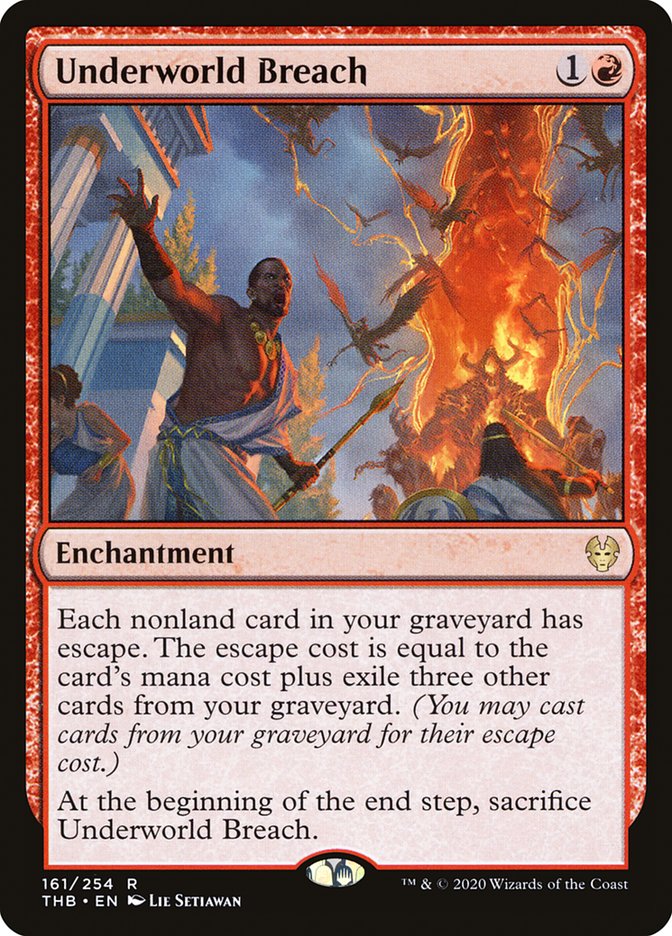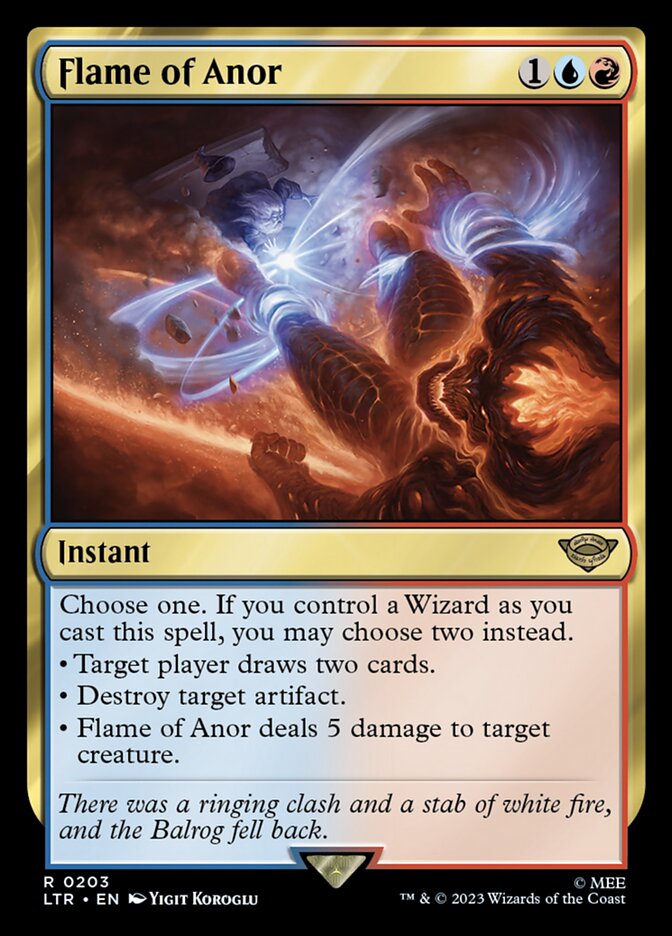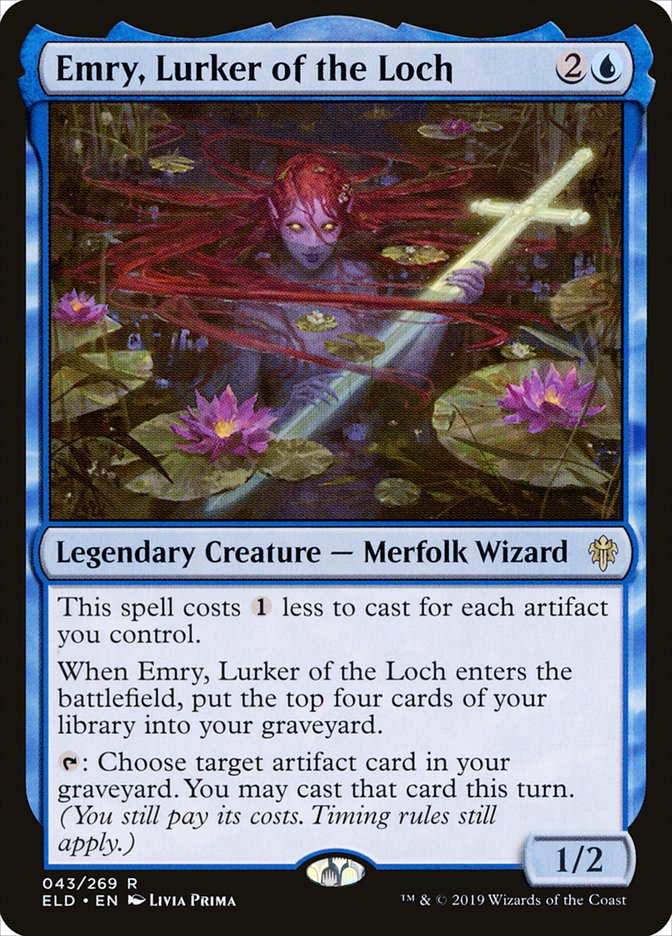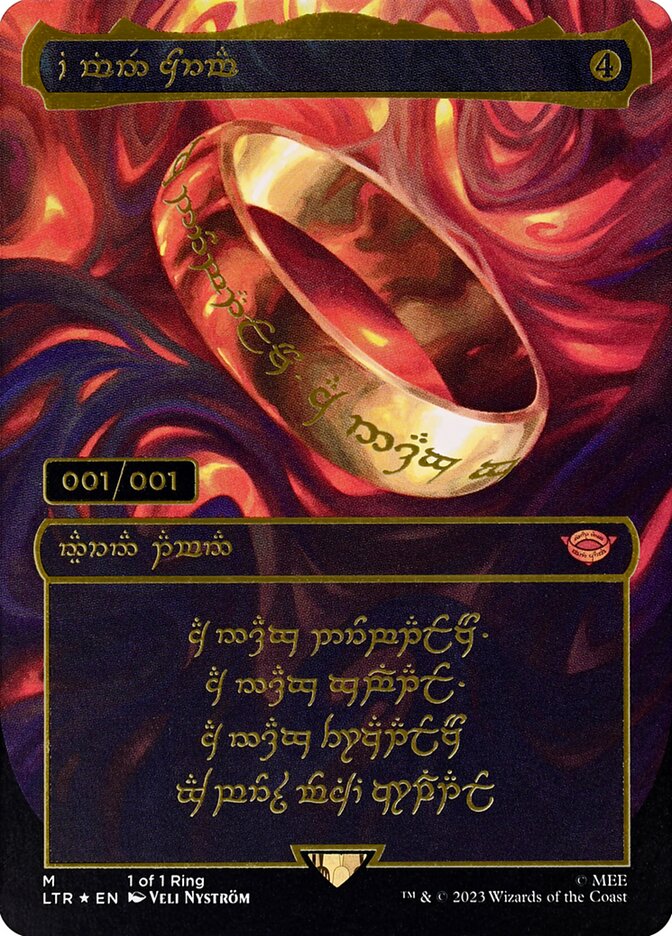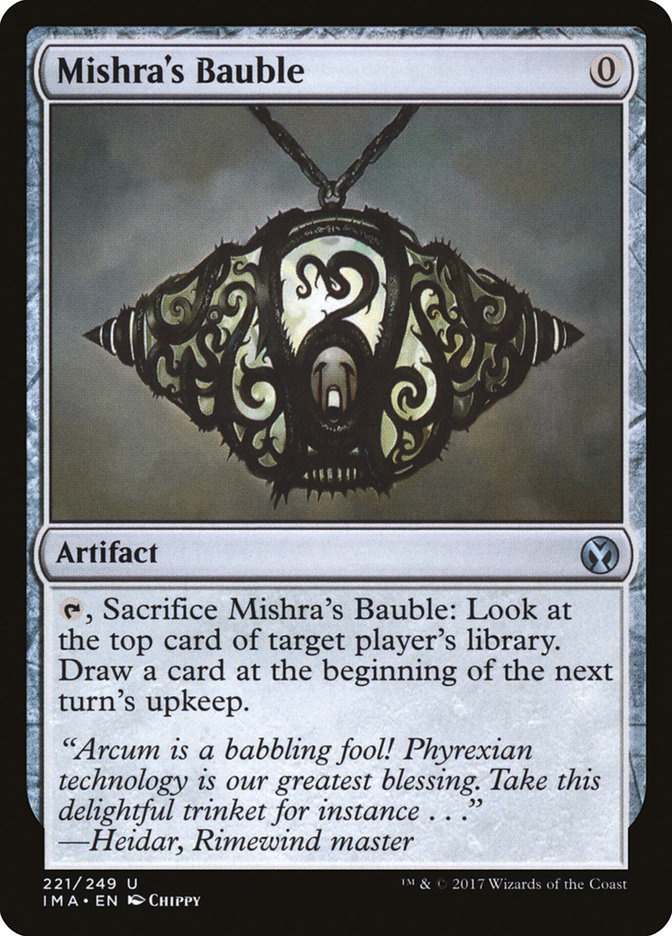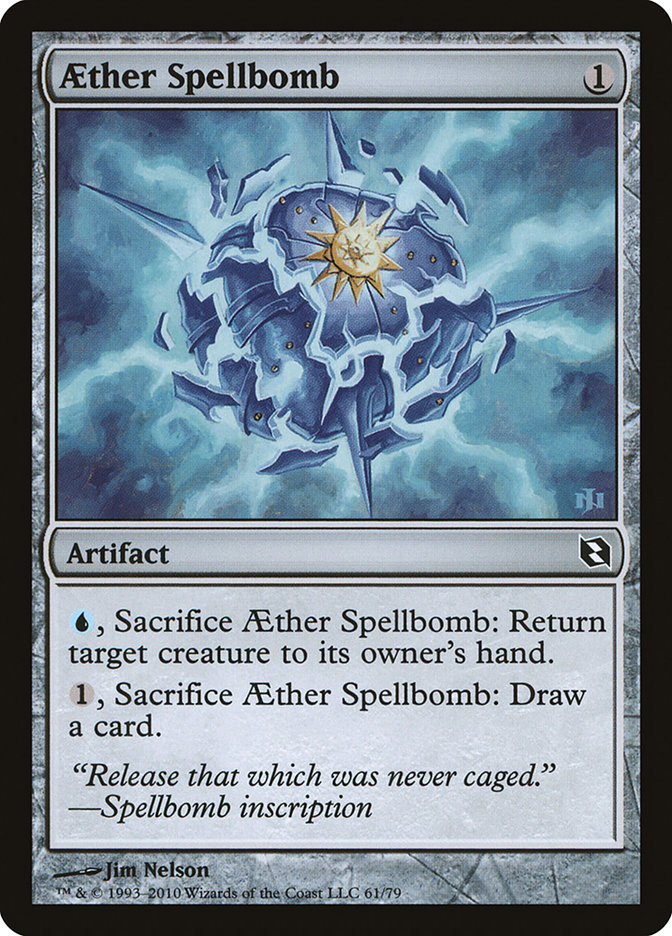Jeskai Breach Guide
Midrangifying Synergy Shells
If you've read several of my articles, you might notice I like to midrangify synergy shells. The goal is to benefit from the strong interactions that synergy offers while using as many independent, stand-alone cards as possible.
The problem with synergy-focused cards is they often need another specific card or two to be powerful. But in real-world Magic games, things don't always go as planned. You might need to mulligan once or twice, you may not draw the cards in the right sequence, or your opponent might disrupt your strategy. All this can leave you with cards that don't do much by themselves.
What I aim for is reducing the risks that come with relying too heavily on synergies. Including more "midrange" cards can also set the stage for transformational sideboard plans. If your main deck is fully loaded with synergy cards, it becomes challenging to adjust your deck after the first game. You would need so many dedicated sideboard slots to do so. Therefore, you end up keeping the same game plan and making it easier for opponents to counter your strategy with their hate cards.
Transforming Jeskai Breach: My Current Version
I explored this concept further with Jeskai Breach. Underworld Breach isn't just a combo piece; it can also be used for value. This makes Jeskai Breach an ideal candidate to get midrangifyed. I also discovered that Flame of Anor is effective against many popular decks, especially given the natural inclusion of wizard creatures in our deck.
I'm not suggesting Jeskai Breach is the best deck out there. It has its strengths but isn't necessarily top-tier in Modern play. However, it can be tricky for opponents to understand because it offers multiple strategies. While it appears as a combo deck, it can shift post sideboard, it can even play prison or midrange spells in the maindeck. Those are all tools that can catch opponents off guard.
Updated Jeskai Breach
Let me share more about what I've learned.

| Creature [9] | ||
|---|---|---|
| 4 Rona, Herald of Invasion | $1.79 | |
| 1 Thassa's Oracle | $22.99 | |
| 4 Emry, Lurker of the Loch | $0.99 | |
| Artifact [14] | ||
|---|---|---|
| 3 Grinding Station | $10.99 | |
| 1 Pyrite Spellbomb | $0.35 | |
| 1 Aether Spellbomb | $0.35 | |
| 2 Mox Amber | $34.99 | |
| 3 The One Ring | $79.99 | |
| 4 Mishra's Bauble | $0.79 | |
| Instant [6] | ||
|---|---|---|
| 1 Lightning Bolt | $1.29 | |
| 4 Unholy Heat | $0.35 | |
| 1 Flame of Anor | $6.99 | |
| Sorcery [4] | ||
|---|---|---|
| 4 Preordain | $1.29 | |
| Enchantment [8] | ||
|---|---|---|
| 4 Underworld Breach | $13.99 | |
| 4 Urza's Saga | $42.99 | |
| Planeswalker [1] | ||
|---|---|---|
| 1 Teferi, Time Raveler | $8.49 | |
| Land [18] | ||
|---|---|---|
| 4 Flooded Strand | $29.99 | |
| 1 Sacred Foundry | $22.99 | |
| 4 Scalding Tarn | $22.99 | |
| 1 Hallowed Fountain | $10.99 | |
| 1 Arid Mesa | $19.99 | |
| 3 Steam Vents | $17.99 | |
| 2 Island | $0.01 | |
| 1 Mountain | $0.01 | |
| 1 Plains | $0.01 | |
| Sideboard [15] | ||
|---|---|---|
| 2 Flame of Anor | $6.99 | |
| 4 Spell Pierce | $0.59 | |
| 1 Tormod's Crypt | $0.59 | |
| 2 Wear/Tear | $0.79 | |
| 2 Teferi, Time Raveler | $8.49 | |
| 3 Prismatic Ending | $0.35 | |
| 1 Engineered Explosives | $12.99 | |
 $327.05 Tix @cardhoarder
$327.05 Tix @cardhoarder
 $8.18 / Week @cardhoarder
$8.18 / Week @cardhoarder
 $786.42 @tcgplayer
$786.42 @tcgplayer
 $973.57 @cardkingdom
$973.57 @cardkingdom
The archetype originally included Ragavan. However, with the printing of Orcish Bowmasters and the metagame's evolution to adapt to the monk, Ragavan's effectiveness became more matchup-dependent. It excels against decks that play neither creatures nor removal, like Tron and combo decks. Yet, it's less consistent against decks centered around the board.
I began moving them to the sideboard. Once there, I found more effective strategies, particularly using Spell Pierce, and eventually phased out Ragavan.

In its place, I introduced Preordain. We have a lot of possible game plans and Preordain is one more element that helps us play the exact game we want.
More than that, Preordain also improves the stability of the deck. In a three-color, 22-land deck that also incorporates Urza’s Saga, the extra consistency offered by preordain is welcomed. While it's challenging to measure its exact impact, it undoubtedly increases the number of games we can actually play.
The Combo

Our combo is a deterministic loop that ultimately wins the game using Thassa’s Oracle. Here's how it works:
- We need three key cards to start: Underworld Breach, Grinding Station, and a 0 mana artifact (either Mishra’s Bauble or Mox Amber).
- We play the 0 mana artifact, then sacrifice it to the Grinding Station, milling three cards from our deck.
- We then exile those three milled cards to bring back (or "escape") our 0 mana artifact. This action also untaps the Grinding Station.
- We repeat this process, milling our entire deck.
- Once our deck is milled, we play Thassa’s Oracle, which gives us the win.
However, the combo needs a bit more setup:
- We must have some cards in our graveyard initially. This ensures we don't accidentally mill Thassa’s Oracle and have to exile it to continue our loop.
- Casting Thassa’s Oracle requires two blue mana (UU). We can get this mana from available lands or use Mox Amber in conjunction with a blue legendary creature.
In practice, the combo often involves starting with some cards in the graveyard. Sometimes, we might kick things off with Mishra’s Bauble, find a Mox Amber during the loop, and gather the necessary mana for Thassa’s Oracle. If we only have Mox Amber and no legendary creature, we can escape Emry. Now that we have a legendary creature and because Emry cost only one blue, it is mana neutral and since it mills 4 cards, it doesn’t slow us down on our cards in the graveyard count.
While the combo is reliable, the real challenge lies in obtaining the necessary pieces and finding the right time to play both Grinding Station and Underworld Breach.
Emry and Artifacts Combinations
Emry + The One Ring
One of the most powerful combinations involving Emry is with The One Ring. Emry allows us to bring back any artifact from our graveyard, and The One Ring offers protection for a turn. Being a legendary artifact, if we have two The One Rings in play, we can use Emry to bring back a second one, triggering the "legend rule" on the first, granting another turn of protection.
Additionally, before sending the first The One Ring to the graveyard, we can opt to draw a card from it to avoid taking damage from its burden. Alternatively, we can draw up to three cards over two turns but at the cost of a damage from the burden. This damage can be too much in some match-ups (Burn, sometimes Rakdos) or be completely free (Rhino, Scales).
This strategy is particularly effective against decks that don't have many removals, like Amulet or Scales. Drawing cards through this loop speeds up our combo's assembly due to the additional resources.
Emry + Mishra’s Bauble
The most common loop with Emry involves Mishra’s Bauble, giving us a card draw and occasionally, a scry and a draw. This is very cheap and can be game-changing in match-ups where trades are frequent.
Emry + Aether Spellbomb
Another loop involves Aether Spellbomb. Replaying this artifact can shield Emry, requiring opponents to use more than one removal to deal with her. We can bring Emry back to our hand, replay her, and a turn later, retrieve the spellbomb again.
An interesting interaction emerges when facing Rhinos from the Temur Cascade deck. Their reliance on 4/4 trample creatures means that Emry combined with Spellbomb can effectively keep these threats at bay. While the Spellbomb can manage one rhino per turn, and Footfalls introduce two at a time, this approach requires some time and maybe additional support, like an Unholy Heat. If they deploy a Shardless Agent and we have our Emry-Spellbomb setup, we can manage the threats, leaving only Violent Outburst as a significant concern. Sorcery speed rhinos allows to bounce one at the end of their turn, replay spellbomb and clear the last one. However, with Violent Outburst, at least one 4/4 is going to attack.
Optimizing Mishra’s Bauble
Mishra’s Bauble is a free artifact that lets you draw a card after a short wait. But its unique ability allows you to peek at the top card of a player's deck. The key is making the most of this glimpse.
Optimization #1: Targeting the Opponent
By checking the top card of the opponent's deck, you get a sneak peek into their strategy. From that one card, you might deduce other cards they could have. It's a puzzle! For example, if they reveal a sorcery-speed card but don’t play it, or if they show a land but play a different one, it tells you something. By understanding these clues, you might safely execute your combo even in situations that could be risky but aren’t. It's a challenging skill at first, but the more you practice, the better you'll get. It’s a muscle.
Optimization #2: Targeting Yourself
Combining Mishra’s Bauble with effects that shuffle (like fetch lands) or mill (like Grinding Station or Emry) can act like a "scry". If you are sure what your next play is going to be and don’t need one more card or if you don’t have a mill or shuffle effect you might delay using the Bauble to make the most of this. But you must weigh the value of a delayed scry against drawing a card immediately.
I recall spending long minutes on my first turn just figuring out the best way to use Mishra’s Bauble. At first, it's daunting. But, like any skill, the more you do it, the easier it gets.
Match-up guide and sideboard plans
Temur Rhinos

Maindeck games can unfold in two different ways. We have games where we try to assemble our combo to race the rhinos. It mostly depends on the number of interactive cards Rhinos draws and it can be very risky to invest mana into Underworld Breach and Grinding Station when a 0 mana Force of Negation can seal the deal. We don’t always have the choice, and that's the route we take when we don’t have the tools to perform our other game plan: prison.
We have a lot of midrange tools to play a normal game against the 4/4s and eventually lock Rhinos out of options. Emry + Aether Spellbomb is one option and Emry + The One Ring works well too (even if the vulnerability to Force of Negation is big). We also have access to Urza's Saga and a couple of constructs bolstered by several artifacts can stabilize against many rhinos and eventually take down the game. Urza’s Saga chapter III can also fetch an Aether Spellbomb, which is a key tool to make Emry indestructible and/or answer rhinos.
Yet, Rhinos can sometimes go a little too fast for us. Urza’s Saga takes many turns and mana to create the situation described, and the very first construct can be vulnerable to a lone fire/ice or dead/gone. Gone can also help go through the construct. That game plan is basically a race; Rhinos tries to race our midrange game plan and if we foresee they might succeed, we might need to try finding the combo pieces and launching the combo despite the risk. The two game plans can sometimes be very intricate.
Post sideboard, we have a lot more tools to perform our midrange/prison game plan. We take out all of our combo pieces and we should be favored. We now have Engineered Explosives that are even stronger than Aether Spellbomb to lock Rhinos, we also have Spell Pierce to prevent getting run over by quick cascade cards, Teferi to answer potential Murktide, reset rhinos, and prevent future cascades.
Unholy Heat is a great card in the match-up, but we also have Prismatic Ending, so we upgrade our heats. It works as a preventive answer to Blood Moon, and it can be hard to have delirium in the early game, whereas Ending is able to remove a rhino regardless of the situation.
Actually winning the game is a formality once we have enabled all our synergies, have constructs, and/or destroyed all the rhinos in play. It is usually a construct that scores the goal, but a flipped Rona can do it. I have taken down some opponents with the beatdown of an Emry and a 1 / 3 Rona.
Rakdos Scam
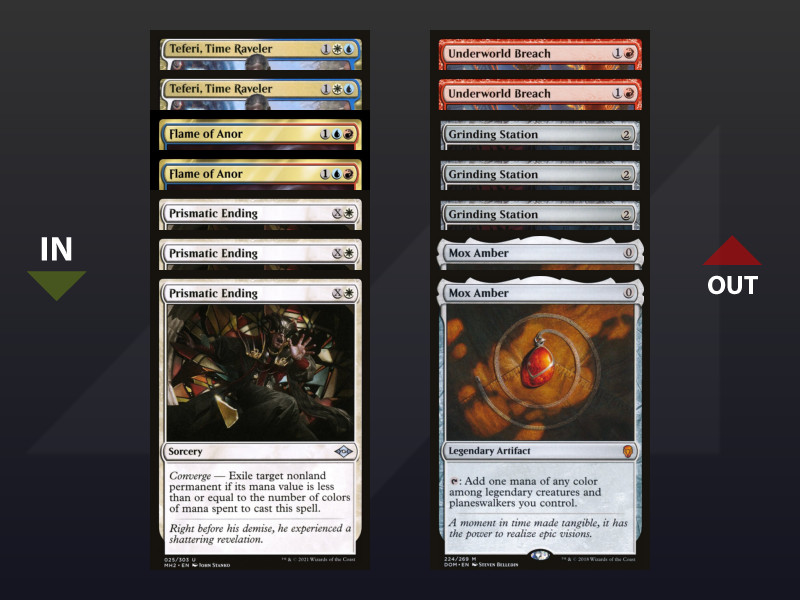
The Rakdos Scam match-up has a very similar victory/defeat scenario as Temur Rhinos. In the maindeck games, we try to stabilize everything and go for a midrange game plan. If Rakdos is too quick in deploying threats and destroying our cards, we can try to launch the combo. This point is a bit different than against Rhinos because it is even harder to reach that point. Multiple duresses from Grief and Thoughtseize, Dauthi Voidwalker preventing our cards from going to the graveyard, and the overall faster clock are tools that make our combo game plan harder.
Yet, they don’t have access to clean answers to The One Ring. This card proves to be very useful in building back a midrange or combo game plan. The way we win games in the maindeck is most often with the combo because Rakdos has more reach than Rhinos, and we often stabilize at a lower life total (the match-up is basically harder in the maindeck).
Post sideboard, we transform into a full midrange game plan taking out most of our combo. I like keeping a Thassa’s Oracle because Blood Moon can challenge our Urza’s Saga, and Rakdos is an archetype that is never really dead. Hence, I like having this option, but if I were to have more sideboard cards or fewer “pre-sideboarded” cards, I’d be fine removing the Thassa’s Oracle.
Flame of Anor and a wizard is almost a win condition. Of course, it doesn’t win on its own, but it offers such a big advantage it is hard for the opponent to overcome it. Yet, our wizards are very fragile, and if I am not under much pressure, I like keeping my wizard in hand and sequence a turn of Wizard + Flame of Anor right away to protect my second effect of Flame of Anor.
Blood Moon is an issue, not really because of shutting down our mana base because we have many fetches and cantrips, but mostly because it kills upon entering play Urza’s Saga. Rakdos players tend to play their Blood Moon as soon as they have a window to cast it, so if I am not under much pressure and can avoid land dropping, I like playing my Urza’s Saga when I am sure the coast is clear. Sure, the opponent can always “top deck” their Blood Moon, but if I was able to make a token out of the Urza’s Saga, the trade is favorable for us.
Underworld Breach rewards us for having more mana and cards in our graveyard. The intuitive play would be to keep it until the very last moment, but Rakdos has Thoughtseize and Grief, which can be drawn naturally in the midgame and might discard our Underworld Breach. For this reason, I like casting my Breach for value when I can retrieve a few cards. Getting three cards, for example, is already a compelling value play, and I usually go for it when I see such an opportunity.
Golgari Yawgmoth
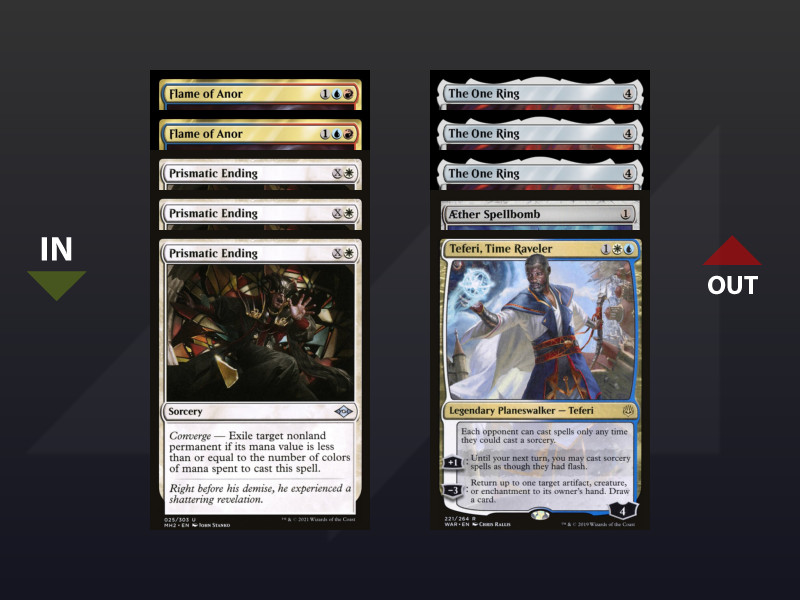
As we’ve seen in the rakdos and temur match-up, our midrange game plan is real. However, it is far from enough against Golgari Yawgmoth who is king at this game. Hence, we keep on the combo game plan.
There are two ways they can prevent us from comboing, one is playing “prison” permanents such as Orcish Bowmasters, Agatha’s Soul Cauldron and some silver bullets like Haywire Mite.
Our removals and interactions are mainly used to protect us against those cards with an “anti-hate” approach. We can also fire a removal on a mana dork from time to time to slow them down in casting a powerful threat ahead of the curve.
We don’t always have a removal for their cards and must directly confront them sometimes. It is not easy to combo off against an Agatha’s Soul Cauldron. One way is to mill ourselves a lot in the same turn (adding an end of turn Grinding Station trigger) to overload their artifact toy. This requires some tempo and mostly works against their slow grist draw. In other game scenarios, it is up to them to activate their Agatha’s on their own turn. That is a mistake but it happens from time to time, primarily because our deck is relatively unknown.
The other way they prevent us from comboing, is by comboing themselves before us. They need to assemble three cards to accomplish that so our removals double as a way to slow them down and to protect ourselves.
The One Ring is usually great in midrange grindy match-ups but unfortunately the come into play trigger doesn’t accomplish anything since they can combo through it. Also, a 4 mana do nothing card is a tempo we can’t afford as Yawgmoth is constantly threatening their combo. Therefore, we need to interact with them very often or at the very least threaten something big to have them interact with us.
The sideboard games unfold the same but we have more removal including the exiling clause of Prismatic Ending which can prove to be very relevant against Undying creatures. We also get to side-out cards that are very weak. The One Ring is among them, as I mentioned, but Teferi is also. Orcish Bowmaster trades very favorably with Teferi and Yawgmoth has a lot of little creatures and we can’t prevent them all from attacking. The way we stabilize all the pesky creatures is by offering unfavorable trades thanks to our defensive bodies of Emry and Rona but they could go wide and attack nonetheless if they had the reward of taking down a planeswalker.
It is typically a match-up where we use Urza’s Saga to fetch an artifact and don’t create the constructs. This is important information as it “unlocks” the ability to play Urza’s Saga on our very first turn.
Burn
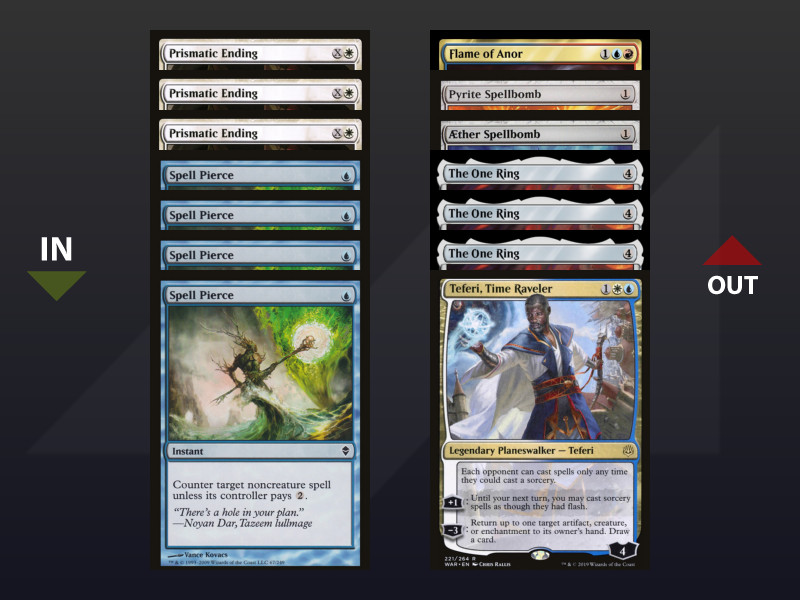
Maindeck games are hard. Not only their clock is faster than ours but they also have access to Roiling Vortex which shuts down our combo. Burn is an archetype that trades cards for our life total making a lot of card disadvantage. Being able to trade cards against theirs is a key win condition and that is hard for us to do. Our deck interacts quite well with cards on the board but we can’t do much with the burn spells.
Occasionally, we can lock them with Teferi + Emry + 2 The One Ring so they have no window to fire their burn spell at us. It requires to have a lot of tools so it’s quite rare. The One Ring’s trigger ability can be useful to trap a Rift Bolt but that doesn’t do much more than that. We even don’t draw with the The One Ring most of the time because the life points from the burden is too much.
We have two main win scenarii, one involves them drawing many creatures and us many spot removals, allowing us to effectively trade against their cards. The other one is by having a very fast combo. That is a match-up where I do not hesitate to cast a speculative Grinding Station on turn 2 to open myself to topdecking the missing combo pieces and not be stifled by the tempo of casting the station.
Post-sideboard, things are very different. Of course, we have less “dead cards” but thanks to Spell Pierce we now have ways to interact with their burn spells. That should offer us enough time to assemble our combo. Yet, against burn, and with almost every archetype, the same spot often happens. That is among the most classic mtg situations : will burn draw a burn?
Once again, the fact Jeskai Breach is quite unknown helps us a ton. I have often faced opponents oversideboarding cards that are not burns and that is deadly. We are mainly fearing bolts at our face.
Mirror

The Maindeck games are very combo centric. Neither of the two players have access to cards that deal with Underworld Breach, rarely to artifacts, or ever with the graveyard. Hence, creatures are a liability since most of the interactive cards trade well with them. We should commit all of our resources to try to find and assemble our combo, and only spend the unused mana on our creatures. Emry can serve as a way to fuel our graveyard and trades one mana for one against Unholy Heat, so that is acceptable. However, Rona trades 2 mana for one against Unholy Heat, and that is not favorable.
The fact that casting creatures is a liability and that racing for the combo is the main objective gives us a significant advantage since we have Preordain instead of Ragavan, and most lists still run Ragavans. This advantage becomes even more pronounced in games beyond the main deck.
In post-sideboard games, the dynamics change considerably. Both players now have ways to interact with artifacts, Underworld Breach, and the graveyard. More importantly, Urza’s Saga can fetch Tormod’s Crypt, which can be reused by Emry, effectively shutting down the combo potential. The challenge of successfully executing the combo changes the nature of the game. They evolve into more grindy and midrange contests, where Flame of Anor stands out.
The plan is simple, destroy everything they play and never let any window to combo happen and at some point we’ll kill them with either Sagas or the combo. We do score the goal this way but it is really card advantage that seals the deal. Jeskai Breach is an archetype that plays many do-nothing cards outside of the combo potential so if we keep on interacting, the opponent will be left with useless Grinding Stations.
Living End
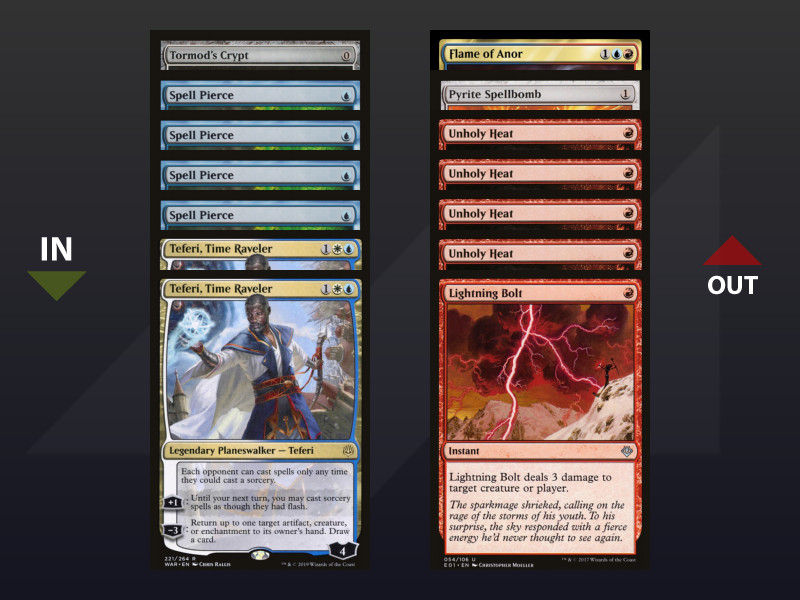
Maindeck, we are very far from having tools to prevent Living End from comboing. The best tool we have is The One Ring and it is very strong. The old list of Living End were running 4 Grief so that was hard to get to cast our 4 mana artifact but they now run Fury instead (as a concession to Rakdos Scam’s Dauthi Voidwalker) and that changes everything. Sure, we would rather have our creatures staying on the board than not, but The One Ring is so key that we prefer things that way.
Force of Negation is a big issue, it is a clean answer to The One Ring and a great way to prevent us from comboing so we have a very hard time beating only one Force. Our best shot is the opponent not drawing it. Frankly, if Living End goes three cyclers into living end with Force back-up, we are always going to lose those games.
Emry and Rona can build some shenanigans to get creatures in the graveyard in order to prevent getting wiped out by Living End. For example, having Emry and The One Ring in the graveyard is very threatening for Living End. It is mostly min/maxing but we are so far behind we need to take every opportunity we can.
The underdog we are game one becomes much more threatening post-sideboard. We now have tools to interact with the card Living End. We have more Teferi to try to lock them, Tormod’s Crypt that we can fetch on Urza’s Saga and Spell Pierce to win some time reaching those “prison” board states.
At some point, we’ll get to assemble the combo but the plan really is to prevent Living End from playing at all and we are quite good at doing it.
Tron

If it was only for the threat of Wurmcoils and The One Ring, that match-up would be fine. However, Tron has access to Karn which prevents us from comboing as well as finding a Chalice or a Tormod’s as a come into play which makes things even harder. They also have Oblivion Stone which can act as a fortunate Naturalize against Underworld Breach if they have the mana (mostly having assembled Tron).
This makes the game one quite hard but things are much better post-sideboard. Once again, Spell Pierce buys a lot of time. Even if Tron makes a lot of mana, we can always find a target and trading against anything really is fine. Trading with a Tron finder in the early game is great and of course it is great to trade with Karn.
We need to race for our combo and try to prevent Tron from doing its things with the remaining mana, the match-up is complicated enough that we can’t really afford staying “open” at the cost of developing ourselves. Our best shot is betting on them “not having it”, be it the Tron piece, the Karn or something else.
Up The Beanstalk
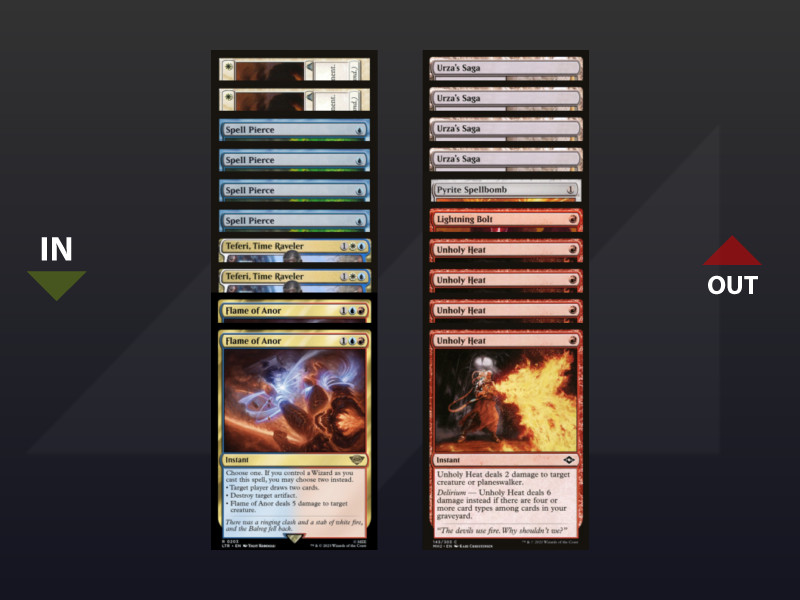
The match-up is very centered around the card Leyline Binding. As a flash oblivion ring, the white enchantment can keep Underworld Breach off the battlefield which is very hard to beat. One way to do so is to try to find more Underworld Breaches than they find Leyline Bindings, but they draw so much thanks to Up The Beanstalk it can be hard.
Our best plan really is to find Teferi and follow it up with the combo. This often means having to cast our Grinding Station on a previous turn to get the tempo to Teferi + Breach. This match-up is among the reasons I play the first Teferi MD, the deck mills itself so much we can Breach, escape Teferi at which point our opponent needs to fire Binding on Breach and we can just bounce the Binding without fearing it to be replayed.
Post-sideboard, we keep on the same game plan but we have more enchantment removals, ways to prevent Up the Beanstalk from coming into play at all, and more Teferi. The fact they have a very low clock is something we can bet on to assemble all the resources needed.
Randomly, Teferi on the play can also prevent them from being able to fire a cascade card which can be devastating. We do sideboard out Urza’s Saga in the match-up, going down to 18 lands. The reason is that the constructs are really bad in the match-up, trading three mana for 0 against a pitched solitude. Going down to such a low land count means we need to prioritize very highly land drops in our cantrips, but that is doable.
Scales

Besides Agatha’s and Walking Ballista, Scales interacts with nothing and is cold to The One Ring. We need to race for our combo, trying to save some time with our removals and The One Ring.
Post-sideboard, Agatha’s becomes much less threatening as we board in many answers. We also have the game-breaking Wear // Tear against Urza’s Saga which is very often a game winning move.
Conclusion
Jeskai Breach is an underdog to modern but it is so complex that opponents make big mistakes and board into wrong sideboard plans. This is key to the winrate of the archetype and if it were to be known, that would make things much harder.
Moreover, dedicating time to mastering Jeskai Breach is immensely rewarding. The deck offers a plethora of strategic options and avenues for creativity, allowing players to craft innovative solutions for various match-ups.
Until next time,
Rémi Fortier


